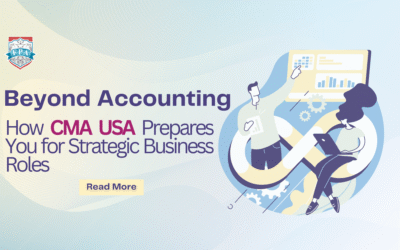The US CMA (Certified Management Accountant) qualification has become one of the most sought-after credentials in the global finance and accounting space. Recognised in more than 100 countries and respected by top companies worldwide, the CMA is considered a gateway to managerial roles in finance, strategic decision-making, and leadership opportunities. But along with this prestige comes a common question among aspirants — Is the US CMA tough?
The honest answer: Yes, it is challenging — but absolutely achievable with the right approach. The difficulty of the US CMA lies not only in the curriculum but also in how candidates prepare, manage time, and understand real-business applications. Let’s break down what makes it tough and what makes it worth the effort.
Why the US CMA Is Considered Tough
- Two Intense & Practical-Focused Exams
The CMA has two parts:
- Part 1: Financial Planning, Performance & Analytics
- Part 2: Strategic Financial Management
Unlike purely theoretical exams, CMA papers test your understanding of real-world business situations. You must apply concepts like costing, planning, strategy, ethics, valuation, and performance measurement to case-based questions.
This shift from remembering to thinking and analyzing is one of the biggest challenges for students transitioning from traditional academic learning.
2. Global Pass Rates Are Lower
The CMA global pass rate averages around 45%, which clearly reflects the rigorous nature of the exams. Many candidates struggle especially with:
- Time pressure during the exam
- Numerical problem-solving
- Essay questions requiring managerial judgment
Passing requires not just knowledge, but clarity, accuracy, and business insight.
3. Strong Foundation in Accounting & Finance Required
Students without prior exposure to:
- Management accounting
- Financial statement analysis
- Costing concepts
…may initially find the curriculum overwhelming. A strong conceptual base is critical for building confidence.
4. Difficulty in Balancing Work & Study
Many CMA aspirants pursue the certificate while working full-time, making it hard to maintain study consistency. The ideal requirement is:
- 300–400 hours per CMA part
- Regular practice sessions
- Mock exams to track performance
Without a planned strategy, study gaps can easily derail progress.
What Makes the US CMA Achievable
Despite the challenges, thousands of students pass CMA every year — because the path to success is clear:
1. Well-Structured Syllabus & Study Materials
The CMA syllabus is compact compared to courses like CPA or CA, and focuses only on essential management accounting and financial leadership topics.
Professional training providers simplify the journey through:
- Concept reinforcement sessions
- Practice question banks
- Essay writing guidance
- Adaptive mock tests
With the right mentorship, subjects that seem difficult initially become manageable.
2. Flexible Exam Schedule
You can appear for the exams in multiple windows throughout the year. This allows candidates to:
- Plan learning around career or college schedules
- Attempt exams at their own pace
- Focus deeply on one part at a time
This flexibility significantly reduces the pressure.
3. Only Two Papers to Clear
Unlike multi-level qualifications with 10–20 exam papers, US CMA requires clearing just two parts. That means:
- Shorter duration of completion (12–18 months)
- Faster entry into high-growth roles
- Lower exam burnout
The shorter pathway makes the toughness worth tackling.
4. High ROI and Career Growth
The motivation to complete CMA is often driven by strong career benefits:
- High-demand global roles like FP&A Analyst, Finance Manager, Cost Accountant, Business Controller
- Salary packages for CMA USA professionals significantly higher than non-CMA peers
- Opportunities across industries like manufacturing, technology, FMCG, consulting, and finance
This future payoff keeps aspirants committed even when preparation gets difficult.
So, Is US CMA Tough? — Final Verdict
The CMA is challenging because it expects you to become more than a book-smart accountant. It shapes you into a:
- Financial strategist
- Business planner
- Decision influencer
- Future leader
It’s tough only if:
- You rely on rote learning
- You skip practice
- You don’t manage time properly
It becomes achievable if:
- You follow a structured study plan
- Practice mock exams regularly
- Get guidance from experienced mentors
- Stay consistent for a few focused months
How to Make CMA Easier: Smart Study Tips
- Start with concept clarity before attempting MCQs
- Build a weekly schedule with measurable targets
- Review mistakes and re-attempt weak areas
- Take full-length mocks to improve speed and confidence
- Stay engaged with current business trends — it helps in essay writing
- Don’t let part gaps be too long; ideally take both exams within a year
With the right discipline and training support, even working professionals and fresh graduates can clear US CMA on the first attempt.
The Bottom Line
The US CMA is not just an exam — it is a transformation. If you’re ready to think strategically, apply concepts practically, and put in a few months of dedicated effort, CMA is absolutely conquerable.
The question isn’t just Is US CMA tough? The real question is — Are you ready to become a future-ready global finance professional? If the answer is yes, then the CMA journey is definitely for you.





